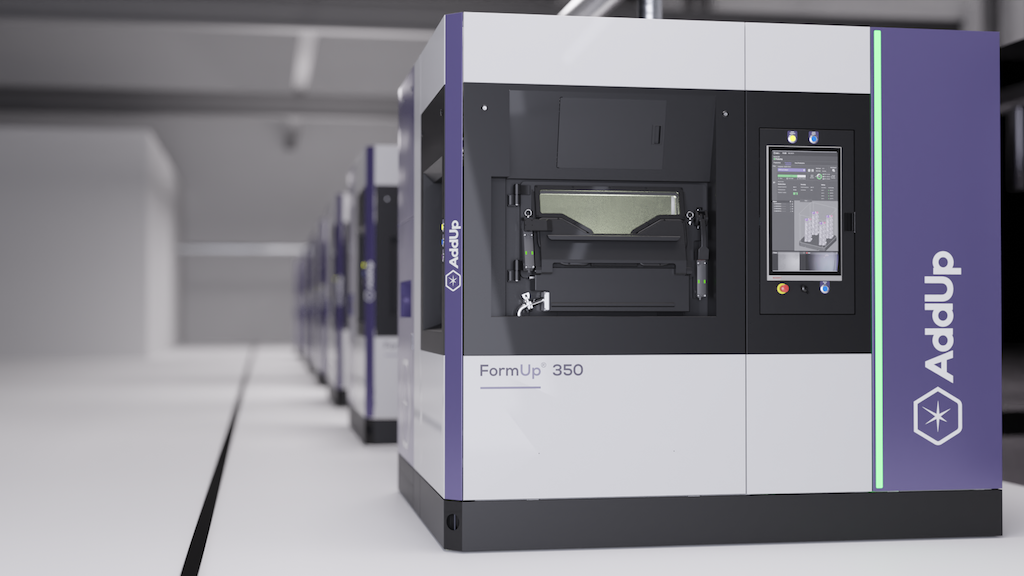AddUp and Dassault Aviation are collaborating to move metal additive manufacturing processes from "prototyping" to "mass production" for aeronautics.
Collaborative R&D project "AEROPRINT", coordinated by Dassault Aviation
The aeronautics industry faces many challenges to maintain and increase its competitiveness: growing global air traffic, increasing scarcity of materials, lightening and optimization of parts, the search for reliability for better quality, and compliance with increasingly demanding regulations, are all issues that must be resolved today. One of the answers to these challenges is the use of metal 3D printing under industrial-scale production conditions.
It is in this context that the collaborative R&D project "AEROPRINT", coordinated by Dassault Aviation, was set up, with the help of numerous partners, research centers, universities, and industries, of which AddUp is a part. Structured over 5 years, this project aims to develop, qualify and implement a competitive pre-industrial demonstrator of multi-material metal additive manufacturing (Titanium and Aluminum), to manufacture complex aeronautical parts certified in classes 2 and 3. The Dassault Aviation site in Argonay in the Auvergne-Rhône-Alpes region (France) has been identified as a pilot for the implementation of this process.
AddUp in charge of developing a new production system
AddUp, a manufacturer of machines and additive parts, is in charge of developing a new production system based on interoperability and robotization of processes. A real automated workshop that will allow, thanks to additive technology, to produce in series and with two different materials parts for aviation. The objective is to pool the equipment while ensuring the separation and proper circulation of the two materials chosen. AddUp's experts are working on a new type of closed enclosure that allows the powder to enter on one side and a tray of metal parts to exit on the other. This future workshop will be composed of two production units of four FormUp® 350 machines based on powder bed fusion technology (L-PBF: Laser Powder Bed Fusion) as well as the necessary finishing means. Two PBF machines manufactured by AddUp have been chosen.
AddUp Dashboards allows you to view all production data in real-time
After a phase of joint research and development to explore all the requirements of this project, AddUp is now working on the full-size model to verify and validate the principles retained, from mechanical design to autonomy, without forgetting the computer, everything being managed by the computer. AddUp Manager, with its ergonomic and intuitive interface, equipped with an ultra-fast trajectory generation engine, allows the preparation of production files by accessing more than 250 modifiable variables and customizable fusion strategies. Monitoring, a key issue for such a project, will be carried out using the already available AddUp Dashboards software and enhanced by bricks developed for this purpose.
AddUp Dashboards allows you to view all production data in real-time, monitor the shop floor, and quickly analyze any machine event. Among the many pre-configured views offered in the software is a customizable map that shows real-time progress, remaining production time, and current status. Users can thus access data from a production run made a few months earlier and follow production in progress via the same tool.
How does this automated workshop work?
The two metal powders, packaged in industrial containers, are loaded by an operator at a delivery station located outside the workshop. Inside, the production tray is taken over by an automated conditioning station which will insert it into a mobile chamber, called a "jacket". It is transported in an inerted shuttle by an Automated Guided Vehicle (AGV) and then placed in each PBF machine, depending on the desired material. When the printing is finished, the shuttle recovers the mobile chamber and takes it to a depowdering station.
This same station allows to remove of the majority of the powder not fused during the printing, and sends it back for the next printing, after a recycling phase. Once the powder is completely removed, the shuttle goes to the conditioning station where the tray carrying the parts is extracted from the chamber to go to the washing and drying station of the parts. The latter receives a new tray and starts printing again. The tray carrying the parts is cleaned more finely before being allowed to leave the workshop where it is taken into charge by the operator.
There are many advantages of an automated workshop. From an HSE point of view (Health, Safety, and Environment), the operators have no contact with the powder at all. They only enter the robotized enclosure for maintenance operations and their operations are done outside of it. From an industrial point of view, once the process has been validated and qualified, the repeatability of production is ensured.

